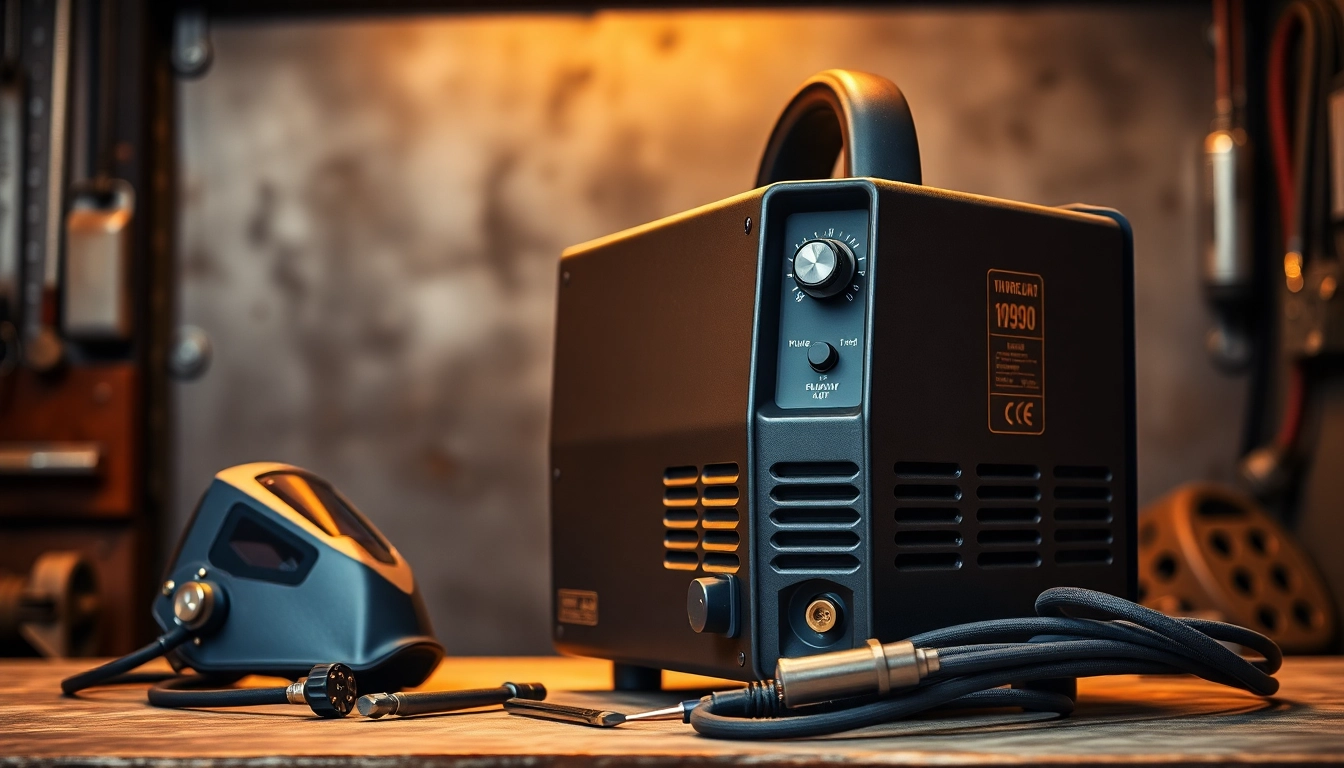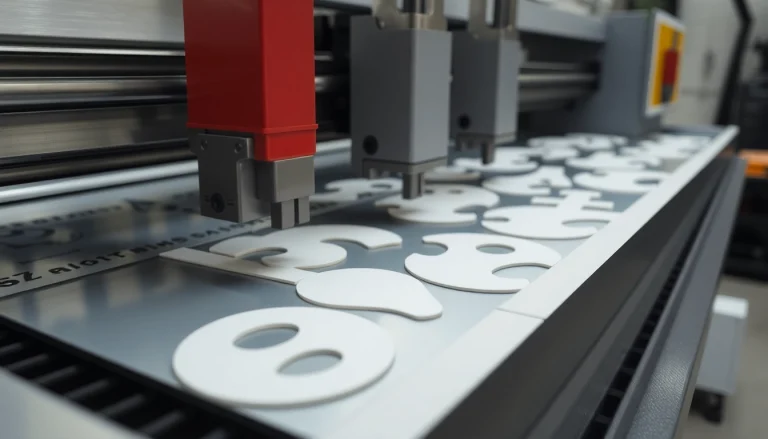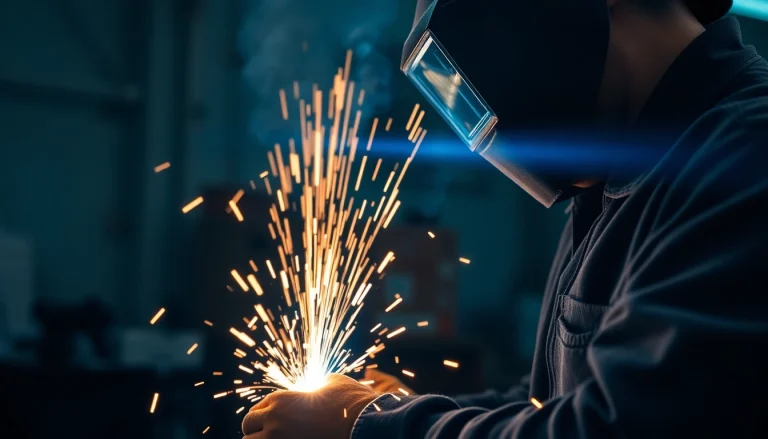Understanding AC DC TIG Welders
What is an AC DC TIG Welder?
An AC DC TIG welder, or tungsten inert gas welder, is a versatile and essential tool in metal fabrication that uses both Alternating Current (AC) and Direct Current (DC) to create strong and precise welds. These machines are particularly renowned for their ability to weld a variety of materials, including aluminum, stainless steel, and mild steel. The capability to switch between AC and DC allows welders to work with diverse metal types and thicknesses, making this equipment a preferred choice among professional fabricators and hobbyists alike. This versatility of the ac dc tig welder enables users to produce high-quality welds across multiple projects.
Key Features of AC DC TIG Welders
AC DC TIG welders come equipped with various features that enhance their functionality and usability. Below are some essential features that distinguish AC DC machines:
- Pulse Welding: This feature reduces the heat input during welding, minimizing distortion and damage to the surrounding material. Pulse settings allow for better control over the bead size and penetration.
- Adjustable Frequency: For AC welding, frequency adjustments help users control the width of the arc and enhance the stability of the weld. Lower frequency allows deeper penetration while higher frequency facilitates a more focused arc.
- Compatibility with Different Tungsten Electrode Types: AC DC TIG welders can be used with various tungsten electrodes, such as pure tungsten for AC applications and thoriated tungsten for DC applications.
- Foot Pedal Control: A foot pedal allows the welder to maintain better control over the amperage, ensuring a smoother and more consistent weld.
- Digital Interface: Many modern TIG welders come with a digital display that offers easy access to settings, enabling precise adjustments in real-time.
Benefits of Choosing AC DC
Investing in an AC DC TIG welder brings multiple advantages:
- Diverse Material Capabilities: The ability to weld both ferrous and non-ferrous materials is a significant advantage, particularly for projects requiring the joining of different metals.
- High-Quality Welds: Due to the controlled arc and the cleanliness of the weld process, TIG welding is known for producing aesthetically pleasing and structurally sound joints.
- Better Control: The features offered by AC DC welders, such as pulse welding and adjustable frequency, contribute to enhanced control over the welding process, making it easier for the operator to achieve the desired results.
- Lower Distortion: The focused heat of TIG welding minimizes the thermal distortion of the base metals, allowing for excellent fit-up and assembly of parts.
Factors to Consider When Buying an AC DC TIG Welder
Power Requirements and Duty Cycle
When selecting an AC DC TIG welder, power requirements and duty cycles are critical aspects to consider. Duty cycle represents the percentage of time a welder can operate within a specific period, typically measured over a 10-minute interval. For instance, a welder rated for a 60% duty cycle can operate for 6 minutes and must cool for 4 minutes. Choosing the right duty cycle depends largely on the production demands of your projects. If you’re working on larger jobs, opt for machines with higher amp ratings and extended duty cycles.
Welding Material Compatibility
Different welder models are optimized for different materials. An AC DC TIG welder’s versatility allows for great flexibility; thus, it is essential to ensure compatibility with the metals you are planning to work with. For aluminum welding, an AC TIG welder is preferred as it can break down oxides commonly present on aluminum surfaces, leading to superior weld quality. On the other hand, for steel or stainless steel, a DC TIG welder is most effective.
Portability and Size
The size and weight of a TIG welder influence its portability. Stationary setups in workshops may permit larger, heavier machines with advanced features. Conversely, if you need a welder you can transport to job sites, look for lighter models that strike a balance between functionality and mobility. Many manufacturers provide smaller models that retain much of the capability of their larger counterparts without compromising performance.
Top AC DC TIG Welders on the Market
Budget-Friendly Options
If you’re just starting with TIG welding and looking for budget-friendly options, several models offer excellent value without sacrificing quality:
- Eastwood AC/DC TIG 200: This machine is a great entry-level option for about $1,000, capable of handling both AC and DC applications, making it versatile for various materials. It also comes with features like pulse control and an easy-to-read LCD display.
- Lotos TIG140: An inverter-based machine designed for users who need a compact welder that provides consistent output for aluminum, stainless steel, and other metals. It retails at an affordable price and is known for its ease of use.
High-End Models
For professionals seeking high-performance welders with advanced features, consider the following models:
- Miller Dynasty 400: Known for its superior arc stability, this machine is equipped with digital controls and a wide range of amperage settings. It is a go-to for heavy-duty applications and can handle high-frequency loads with ease.
- Lincoln Electric Square Wave TIG 200: This model is perfect for challenging welds on aluminum, offering a plethora of features, including advanced AC capabilities for deoxidizing aluminum surfaces, making it a popular choice in industrial applications.
Best for Beginners
New welders will benefit from machines that are straightforward to set up and use:
- PrimeWeld TIG225X: A reliable, easy-to-use machine that includes a user-friendly interface, suitable for both beginners and seasoned welders looking to tackle different project needs.
- YesWelder TIG-205DS: This is a dual voltage machine that is lightweight, portable, and equipped with a digital display, making it conducive for beginner use while still being robust enough for experienced hands.
Welding Techniques and Settings for AC DC TIG Welders
Setting Up Your AC DC TIG Welder
Setting up an AC DC TIG welder involves several steps to ensure optimal performance:
- Assemble the Torch: Attach the appropriate tungsten electrode to the torch. For AC welding with aluminum, use a pure tungsten or zirconiated tungsten electrode, while a thoriated tungsten is ideal for DC welding.
- Connect Gas Supply: Set up your argon gas tank and regulator, ensuring leaks are checked before starting your welding operation. Argon is essential for shielding the weld from contamination.
- Adjust Amperage Settings: Depending on the material and its thickness, adjust the welder’s amperage. A good rule of thumb is to use 1 amp per 0.001 inches of material thickness.
- Set Polarity: Ensure the correct polarity is used according to the welding procedure. For aluminum, set it to AC, and for steels, set it to DC.
- Practice: Before starting your project, practice on scrap material to fine-tune your settings.
Advanced Welding Techniques
Staying abreast of advanced welding techniques can significantly enhance your quality of work with AC DC TIG welders:
- Weaving Patterns: Instead of a straight linear movement, implement weaving patterns for wider beads, which can also stabilize the heat distribution.
- Stringer Beads: Use just a straight line motion for tighter welds, as this can help minimize distortion, especially on thin materials.
- Heat Management: Be mindful of heat input to avoid burn-through, especially on thin metals. Adjust your travel speed and arc length accordingly.
Common Mistakes to Avoid
Even seasoned welders can make mistakes. Here are some common missteps:
- Inadequate Cleaning: Always clean the welding area before starting; contamination can lead to weak welds.
- Incorrect Tungsten Preparation: Ensure the tungsten is sharpened properly to allow for a clean arc strike.
- Improper Gas Flow Rate: Too much or too little shield gas can lead to poor quality welds. Aim for a flow rate between 15-20 cubic feet per hour.
Maintaining Your AC DC TIG Welder
Routine Maintenance Tips
To ensure longevity and reliable performance from your AC DC TIG welder, follow these routine maintenance tips:
- Check Gas Supply: Regularly inspect and refill your argon gas supply to avoid interruptions during welding.
- Clean the Torch: After each use, clean the torch cups and nozzle to remove spatter and impurities that could disrupt performance.
- Inspect Cables and Connectors: Regularly check the condition of cables and connectors for wear and tear to prevent electrical malfunctions.
Identifying and Troubleshooting Issues
If you encounter issues with your welder, consider the following troubleshooting tips:
- No Arc: Check if the welder is set to the correct power source, and ensure gas flow is properly established.
- Weak Welds: This may be a result of incorrect amperage or travel speed; retune your settings accordingly.
- Inconsistent Arc: Verify that the tungsten electrode is properly sharpened and that the collet is secure.
When to Seek Professional Help
Sometimes, the best measure is consulting a professional. Situations where this is warranted include:
- Electrical Issues: If you suspect faulty wiring or electric failures, do not attempt repairs; enlist an expert.
- Persistent Performance Issues: If routine troubleshooting does not rectify ongoing problems, professional evaluation is recommended.
- Upgrades or Modifications: For any upgrades or advanced modifications, consulting a professional can ensure safe and effective implementation.






